Introduction to Smart Packaging with IIoT
Smart packaging with the Industrial Internet of Things (IIoT) represents a revolutionary convergence of packaging and digital technology. It transforms traditional packaging into intelligent systems capable of communication, environmental monitoring, and even direct interaction with consumers. By embedding IIoT technologies, smart packaging offers unprecedented functionality, including real time tracking, condition monitoring, product authentication, and enhanced user engagement. This integration facilitates seamless supply chain optimization, improved product safety, and a personalized consumer experience, setting a new standard for the packaging industry.
Core Technologies in Smart Packaging
1. Sensors in Smart Packaging
- Types and Functions:
- Temperature sensors: These are critical for perishable goods, ensuring products like food and pharmaceuticals are stored and transported within safe temperature ranges. Specifications might include accuracy (e.g., ±0.5°C), operational range (e.g., -20°C to +60°C), and communication capabilities (e.g., NFC, Bluetooth).
- Humidity Sensors: Used to monitor moisture levels, they are crucial for products susceptible to damage from humidity. Specifications typically cover accuracy (e.g., ±3% RH), range (0–100% RH), and integration with other monitoring systems.
- Tamper Sensors: Detect unauthorized access or tampering with the product packaging. They can be mechanical or electronic, with specifications including the method of detection (e.g., circuit break, pressure sensing) and notification mechanisms (e.g., visual indicator, wireless alert).
2. RFID/NFC Tags
- RFID (Radio-Frequency Identification) Tags: Employ electromagnetic fields to automatically identify and track tags attached to objects. Specifications include:
- Frequency: low frequency (LF), high frequency (HF), and ultra high frequency (UHF).
- Read Range: From a few centimeters (HF/NFC) up to several meters (UHF), depending on the frequency and environment.
- Memory: Varies, with some tags offering up to 8KB of storage for data.
- Power Source: Passive (powered by the reader’s electromagnetic field), Active (battery powered), or Semi Passive (battery assisted).
- NFC (Near Field Communication) Tags: A subset of HF RFID that allows two-way communication between endpoints. Specifications might include:
- Operating Frequency: Typically 13.56 MHz.
- Data Transfer Rate: Up to 424 kbit/s.
- Security Features: encryption capabilities for secure data exchange.
3. QR Codes
- Functionality: A type of matrix barcode that contains information about the item to which it is attached. QR codes in smart packaging can encode URLs, serial numbers, and other product details.
- Specifications:
- Scanning Distance: Dependent on the size of the QR code and the resolution of the scanner.
- Data Capacity: Can store up to 3,000 alphanumeric characters.
- Error Correction: Offers error correction capabilities to restore data if the code is dirty or damaged.
4. Cloud Computing and Data Analytics
- Cloud Storage and Management: Data collected from sensors and tags is stored on cloud based platforms, enabling centralized management and access. Specifications involve storage capacity, scalability, and access control.
- Data Analytics: Advanced analytics tools process and analyze the data to generate insights into product conditions, consumer behavior, and supply chain efficiency. Specifications might include real time processing capabilities, AI and machine learning integration for predictive analytics, and compatibility with various data formats and sources.
Integration and implementation
Step 1: Needs Assessment and Planning
- Identify Objectives: Clearly define what you aim to achieve with smart packaging. Objectives can range from enhancing product safety to improving supply chain visibility, increasing consumer engagement, and ensuring regulatory compliance.
- Analyze Requirements: Assess the specific needs of the product, target market, and supply chain logistics. This includes understanding environmental conditions, handling requirements, consumer interaction preferences, and data management needs.
Step 2: Technology Selection
- Choose Appropriate Sensors: Based on the needs assessment, select sensors that can accurately monitor conditions such as temperature, humidity, or tampering. Consider factors like accuracy, range, power consumption, and size.
- RFID/NFC Tags and QR Codes: Decide between RFID, NFC tags, or QR codes based on the application. RFID and NFC are ideal for supply chain tracking and security, while QR codes are effective for consumer engagement and information sharing.
- Cloud Platform and Data Analytics: Select a cloud computing platform that offers robust data storage, management, and analytics capabilities. Ensure it supports scalability, integration with existing systems, and real-time data processing.
Step 3: Design and Prototyping
- Packaging Design: Incorporate selected technologies into the packaging design, ensuring that they do not interfere with the product’s integrity or user experience. This may involve customizing the packaging material, form factor, and layout to accommodate sensors and tags.
- Prototyping: Develop prototypes to test the functionality and performance of the smart packaging solution. This phase should validate the integration of IIoT components, sensor accuracy, data transmission reliability, and overall durability.
Step 4: System Integration and Testing
- Integration with IT Systems: Ensure the smart packaging system seamlessly integrates with existing IT infrastructure, including ERP (Enterprise Resource Planning), WMS (Warehouse Management Systems), and CRM (Customer Relationship Management) systems for comprehensive data analysis and insights.
- Testing: Conduct extensive testing under various conditions to ensure the reliability and effectiveness of the smart packaging solution. This includes stress testing, environmental testing, and user acceptance testing to identify and resolve any issues before widespread deployment.
Step 5: Implementation and Deployment
- Supply Chain Coordination: Work closely with suppliers, manufacturers, logistics providers, and retailers to integrate smart packaging into the supply chain. This includes training staff on handling and interpreting data from smart packaging and ensuring compatibility across the distribution network.
- Consumer Engagement Strategies: Develop strategies to leverage smart packaging for enhanced consumer engagement. This could involve creating interactive marketing campaigns, offering personalized content through QR codes or NFC tags, and gathering consumer feedback for continuous improvement.
Step 6: Monitoring, Maintenance, and Optimization
- Data Monitoring and Analysis: Continuously monitor data collected from smart packaging to optimize supply chain operations, improve product quality, and enhance consumer experiences. Utilize analytics tools to uncover insights and identify trends.
- Maintenance and Updates: Regularly review and maintain the smart packaging system, updating firmware and software as needed to address security vulnerabilities, improve functionality, and add new features.
- Optimization: Based on data insights and stakeholder feedback, refine and optimize the smart packaging solution. This could involve adjusting sensor configurations, updating cloud analytics algorithms, or redesigning packaging elements for better performance and user experience.
Case Study: Smart Packaging Integration in the Pharmaceutical Industry
A leading pharmaceutical company faced challenges in ensuring the integrity of temperature sensitive medications during transport and storage. With a global distribution network, maintaining the required cold chain conditions was critical to ensuring the efficacy and safety of their products. The company decided to implement smart packaging solutions leveraging IIoT technologies to address these challenges.
Objective:
To enhance the visibility and control of temperature conditions for temperature sensitive medications throughout the supply chain, from manufacturing to end users, thereby reducing waste and improving patient safety.
Implementation Process:
Step 1: Needs Assessment
- The company identified the key requirement: real time temperature monitoring with alerts for deviations beyond the safe range (2°C to 8°C) during storage and transit.
Step 2: Technology Selection
- Sensors: Temperature sensors with high accuracy (±0.5°C) and low power consumption were selected for continuous monitoring.
- RFID Tags: Passive UHF RFID tags were chosen for tracking the location of the products throughout the supply chain.
- Cloud Platform: A cloud based platform was selected for data aggregation, analysis, and alert management, capable of integrating with the company’s existing supply chain management system.
Step 3: Design and Prototyping
- The smart packaging design incorporated lightweight, biocompatible materials that could securely house the sensors and RFID tags without compromising the medication packaging.
- Prototypes were developed and subjected to rigorous testing to ensure functionality under various environmental conditions and handling scenarios.
Step 4: System Integration and Testing
- The smart packaging system was integrated with the company’s ERP and supply chain management systems, enabling real time data flow and analysis.
- Pilot testing was conducted with a select range of products across different supply chain routes to validate the system’s effectiveness and reliability.
Step 5: Deployment
- Following successful pilot testing, the smart packaging solution was deployed across all temperature sensitive medications in the company’s portfolio.
- Training sessions were held for supply chain partners and staff on handling procedures and response protocols for temperature alerts.
Results:
- Enhanced Product Integrity: The real time temperature monitoring and alert system significantly reduced the incidence of temperature excursions, ensuring that over 98% of medications maintained their integrity throughout the supply chain.
- Reduced Waste: The ability to intervene proactively when potential issues were detected led to a 60% reduction in product wastage due to temperature deviations.
- Improved Compliance: Automated data logging and reporting simplified compliance with regulatory requirements for temperature monitoring and documentation.
- Increased Customer Trust: Enhanced transparency and the assurance of product safety strengthened trust among healthcare providers and patients.
Conclusion
The use of IIoT technologies in smart packaging represents a significant leap forward in how products are packaged, monitored, and interacted with. By harnessing sensors, RFID/NFC tags, QR codes, and cloud computing, businesses can unlock new levels of efficiency, safety, and consumer engagement, paving the way for innovative packaging solutions that add value far beyond mere containment and branding.



